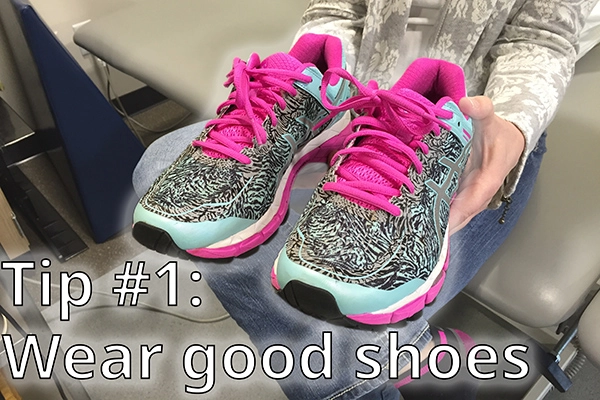3 (well, maybe 9) tips if you're on your feet all day


“Oh, my aching feet!”
If your job requires standing or walking much of the day, you’ve probably uttered those words. Chloe Aguilar, a Salem Health physical therapist, shares these tips to make working on your feet easier.
1. Wear good shoes. If there’s anything you should be spending a lot of money on it’s a good shoe. Look for shoes with these features:
- A sole that’s wider than the heel to keep you from tipping one way or the other.
- Good cushioning.
- The correct size. Your foot has likely changed over the years, so get measured while you are standing up so you buy a shoe that really fits. Make sure there is a thumbnail distance when you’re standing from your longest toe to the end of the shoe so you have room to flare and flex your toes, otherwise you will start developing other foot problems.
2. Use good posture at work.
- Don’t lock your knees when standing. Do soften your knees. Locking your knees causes knee and low back pain, and that causes the knee to not accept equal weight bearing. When you lock on any joint, you’re going to be traumatizing it.
- Don’t stand with your legs close together. “My mother up in heaven is saying, ‘Chloe Ann, sit like a lady.’ And I have to say, ‘No mom, I need to get a bigger base of support.’ Because once I do that, I can use both sides of my body equally,” Aguilar says.
- Do tighten your tummy and tushie. If you activate your core, it takes some of that stress off of your feet and knees.
3. Move at work. These simple maneuvers can help.
- Shift your weight. If you stop for just a moment and shift your weight from side to side, you can equalize weight bearing and activate your core more.
- Bend your knees. Tiny knee bends throughout the day can help your knees not lock so much.
- Rock up on your toes, and down on your heels, to work the muscles on the front and back of your calves.
If those tips don’t solve your problems, don’t tough it out. Get help and take care of your before it gets worse. Ask your primary care doctor for a referral to physical therapy.